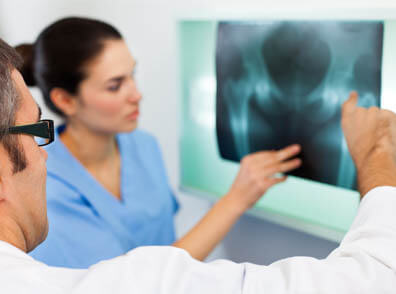The recovery process after orthopedic surgery is multifaceted and involves several stages aimed at ensuring proper healing and restoring function. The specifics can vary depending on the type of surgery, the patient’s overall health, and the nature of the injury. Here’s a detailed overview of the typical recovery process:
1. Immediate Postoperative Period
Hospital Stay
- Monitoring: Immediately after surgery, patients are closely monitored in the recovery room for vital signs, pain levels, and any potential complications.
- Pain Management: Pain control is managed through medications, which may include opioids, nonsteroidal anti-inflammatory drugs (NSAIDs), and regional anesthesia (nerve blocks).
Early Mobilization
- Encouraged Movement: Early mobilization is often encouraged to prevent complications such as blood clots and to start the rehabilitation process. Depending on the surgery, this might involve simple movements or assisted walking with crutches or a walker.
2. Initial Recovery Phase (First Few Weeks)
Wound Care
- Incision Care: Patients are instructed on how to keep the surgical site clean and dry. This includes changing dressings as recommended and monitoring for signs of infection.
- Follow-Up Appointments: Regular follow-up visits with the surgeon to check on the healing process and remove stitches or staples if necessary.
Physical Therapy Initiation
- Early Exercises: Physical therapy usually begins within a few days to weeks post-surgery, focusing initially on gentle range-of-motion exercises to prevent stiffness.
- Gradual Progression: The intensity and type of exercises are gradually increased as healing progresses and pain decreases.
3. Intermediate Recovery Phase (Weeks to Months)
Rehabilitation
- Strengthening and Flexibility: Physical therapy will focus more on strengthening the muscles around the affected area and improving flexibility.
- Functional Training: Activities are incorporated to restore functional movements related to daily activities and sports-specific skills if applicable.
Monitoring Progress
- Regular Assessments: Continuous evaluation of the patient's progress, with adjustments to the rehabilitation plan as needed to address any issues or setbacks.
4. Long-Term Recovery (Months to a Year)
Advanced Rehabilitation
- High-Level Activities: For athletes and active individuals, the focus shifts to high-level activities that simulate sports movements and enhance coordination and endurance.
- Preventive Strategies: Techniques to prevent reinjury, such as balance training and proper body mechanics, are emphasized.
Return to Activity
- Gradual Return: The return to full activity or sports is typically gradual, following a structured plan to ensure the patient is physically ready and to minimize the risk of reinjury.
- Performance Testing: Athletes may undergo performance testing to determine readiness to return to their sport.
5. Ongoing Maintenance
Lifestyle Adjustments
- Healthy Practices: Maintaining a healthy lifestyle with regular exercise, a balanced diet, and weight management can support long-term joint health and overall recovery.
- Continued Therapy: Some patients may benefit from ongoing physical therapy sessions or at-home exercise programs to maintain strength and flexibility.
Monitoring for Complications
- Regular Check-Ups: Periodic visits to the orthopedic surgeon to monitor the long-term success of the surgery and to address any new issues that arise.
- Awareness of Signs: Patients are advised to be aware of signs of potential complications, such as persistent pain, swelling, or changes in function, and to seek medical advice promptly if these occur.
Conclusion :
The recovery process after orthopedic surgery is a structured and progressive journey that involves careful monitoring, physical rehabilitation, and gradual return to normal activities. Following medical advice, adhering to rehabilitation protocols, and making necessary lifestyle adjustments are crucial for a successful recovery and the restoration of function





Comments